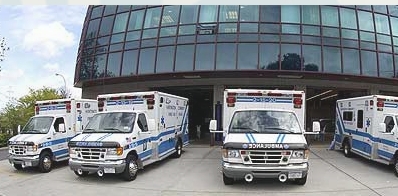- Home
- Events
- Investigations
- News
- OPINION
- Police/Fire/EMS
- Politics
- Sports & Schools
When Changing Clocks – Check C.O. & Smoke Detectors
By Andrea Golinsky, Public Information Officer for HCFAS
Huntington Community First Aid Squad (HCFAS) urges all Long Islanders to check their Carbon Monoxide detectors and smoke detectors when they change their clocks back one hour from Daylight Savings Time on Sunday, November 2, 2014 at 2:00 a.m. It is a good time for residents to check the batteries in their detectors to make sure they are functioning, and replace the batteries, if needed.
 Carbon monoxide, or CO, is a colorless, odorless, toxic gas. Each year, nearly 5,000 people in the United States are treated in hospital emergency rooms for CO poisoning; but this number is believed to be an underestimate of CO poisoning because many people with CO symptoms mistake the symptoms for the flu, or are misdiagnosed.
Carbon monoxide, or CO, is a colorless, odorless, toxic gas. Each year, nearly 5,000 people in the United States are treated in hospital emergency rooms for CO poisoning; but this number is believed to be an underestimate of CO poisoning because many people with CO symptoms mistake the symptoms for the flu, or are misdiagnosed.
Common sources of CO include wood or gas fueled appliances such as room heaters, water heaters, fireplaces, furnaces, wood burning stoves and portable generators. Most of these appliances see an increased use in homes with the onset of cold weather.
Death from CO poisoning can result with some, or all of these symptoms – dizziness, fatigue, headache, nausea, irregular breathing – never being experienced, in which case the overexposed victim simply “falls asleep” and never regains consciousness.
CO exposures especially affect unborn babies, infants, and people with anemia or a history of heart disease. Breathing low levels of the chemical can cause fatigue and increase chest pain in people with chronic heart disease.
Any fuel-burning appliance in your home is a potential CO source. If such appliances are not installed, maintained, and used properly, CO may accumulate to dangerous and even deadly levels in homes or poorly ventilated areas.
HCFAS Chief Tom Lemp reminds the community that this is a matter, literally, of life and death, observing, “Earlier this year our community lost a father of two to a carbon monoxide leak in the restaurant that he managed. The leak, which went undetected, claimed the life of Steven Nelson and sent more than two dozen people to the hospital. The building was not required to have carbon monoxide detectors, and there were none, but that tragedy should serve as a wake-up call that we all should provide the detectors for our families”.
HOW TO PROTECT YOURSELF & YOUR FAMILY
Next to the prevention of the production of toxic CO gas by proper appliance maintenance, installation, and use, the best defense against this deadly killer is a CO alarm. These devices can detect toxic concentration of CO in the air, sound an alarm, and thereby save lives.
A CO detector alarm indicates elevated levels of CO in the home. Never ignore the alarm or otherwise silence it unless a qualified individual has examined the affected area and deemed it safe.
If your CO alarm sounds, immediately open windows and doors for ventilation. If anyone in the home is experiencing symptoms of CO poisoning (headache, dizziness, or other flu-like symptoms) immediately evacuate the house and call the fire department. If no one is experiencing these symptoms, continue to ventilate, turn off fuel-burning appliances, and call a qualified technician to inspect your heating system and appliances, as soon as possible. Because you have provided ventilation, the CO buildup may have dissipated by the time help responds and your problem may appear to be temporarily solved. Do not operate any fuel-burning appliances until you have clearly identified the source of the problem.
SMOKE ALARMS SAVE LIVES
According to the National Fire Protection Association (NFPA), in more than one-third of home fire deaths, no smoke alarms were present. In one-quarter of home fire deaths, smoke alarms were present, but did not sound.
Disconnected, missing or dead batteries were the cause of existing alarms not operating; 36% of fatal fire victims never wake up before being injured. Now is the perfect time to also check your smoke detectors, and replace the batteries.
Huntington Community First Aid Squad provides Advanced Life Support Ambulances and Emergency Medical Services to residents within the town of Huntington, New York, since 1967. All-volunteer, on-duty crews are in-house, ready to go 24/7, 365 days a year, good and bad weather, including holidays, to answer the call from neighbors in need. The Huntington Community Ambulance District covers an area from Lloyd Harbor and Lloyd Neck in the North – to Melville in the South and from the Nassau/Suffolk border and Cold Spring Harbor in the West – to Greenlawn and Dix Hills in the East. Over 280 volunteer members responded to more than 5,600 calls in 2013.




.png)
You must be logged in to post a comment Login